What Is The Hop Latent Viroid (HpLVd) and How To Treat It

- 1. What is the hop latent viroid?
- 2. How does the hop latent viroid spread?
- 3. How does the hplvd affect cannabis plants?
- 4. What to do if your plants have the “dudding disease”?
- 5. Alternative treatment
- 6. Extra tips
- 7. In conclusion
If your crop looks stunted or weak and you have tried adjusting nutrient, water, and light levels, it’s possible that there’s something more serious going on. For a couple of years now, commercial growers have been dealing with this issue but without any hope but recently, researchers have that it might be the HpLVd. Hop latent viroid is a virus that spreads through scissors or scalpels when pruning or cloning your feminized seeds and can result in weak plant growth. This pathogen is an example of what cannabis growers are up against. Unless you're lucky, it’s rare to grow cannabis for several years in a row without encountering a pest or disease of some kind. There are many life forms out there that have an appetite for cannabis tissue, from fungi and viruses to bugs and even large mammals. As cannabis growers, it’s important to develop a broad set of skills.
Of course, you need to know how to water and provide your plant with a large spectrum and macronutrients and micronutrients. You also need to develop knowledge of lighting, light intensity, and light cycle. It also helps to become familiar with soil biology and chemistry in order to produce the healthiest plants possible. Along the same vein, you also need to know exactly how to protect your plants against diseases that can result in decreased yields and crop losses. Not only do you need to know how to prevent such infections, but also how to treat them when they inevitably take hold. Below, you’ll learn all about hop latent viroid and how to protect your weed crop from this pathogen.
1. What Is The Hop Latent Viroid?
The HpLVd is an infectious pathogen that can cause “dudding” or the “dudding disease” in cannabis plants, this disease may or may not show symptoms, or even stay dormant for years before even showing symptoms. The first signs of this disease were first discovered in 2018 but were only confirmed in 2019 when more research was done.
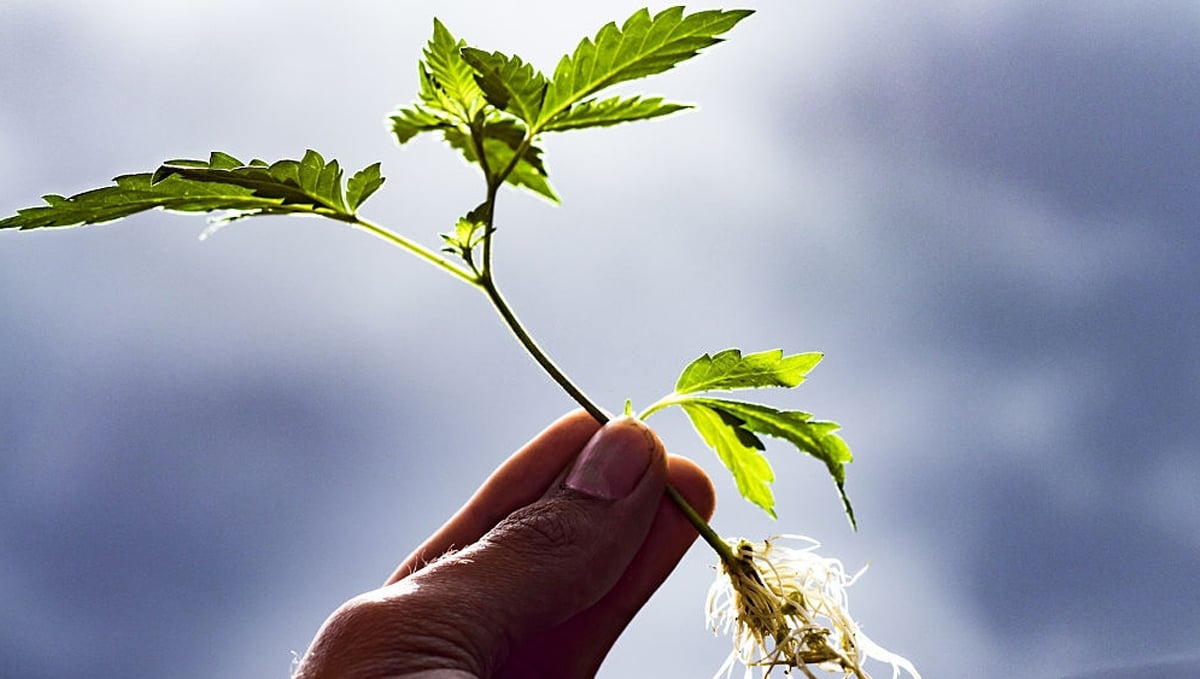
Thanks to this researches, it has been established that in the US and Canada, every crop tested was infected with the Hop latent viroid, at an infection rate of about 25-30%, meaning that if a sick plant was introduced into a garden of 100 plants, up to 30 plants would get infected and could cause millions of dollars to breeders and commercial growers.
2. How Does The Hop Latent Viroid Spread?
Due to the current cannabis regulations, research about this pathogen is still ongoing but it’s known that the virus can spread through contact (for example, pruning an infected plant and then pruning an uninfected plant) such as scissors, scalpels, shears, or any similar tool so it’s extremely important that you sterilize them before touching a new plant.
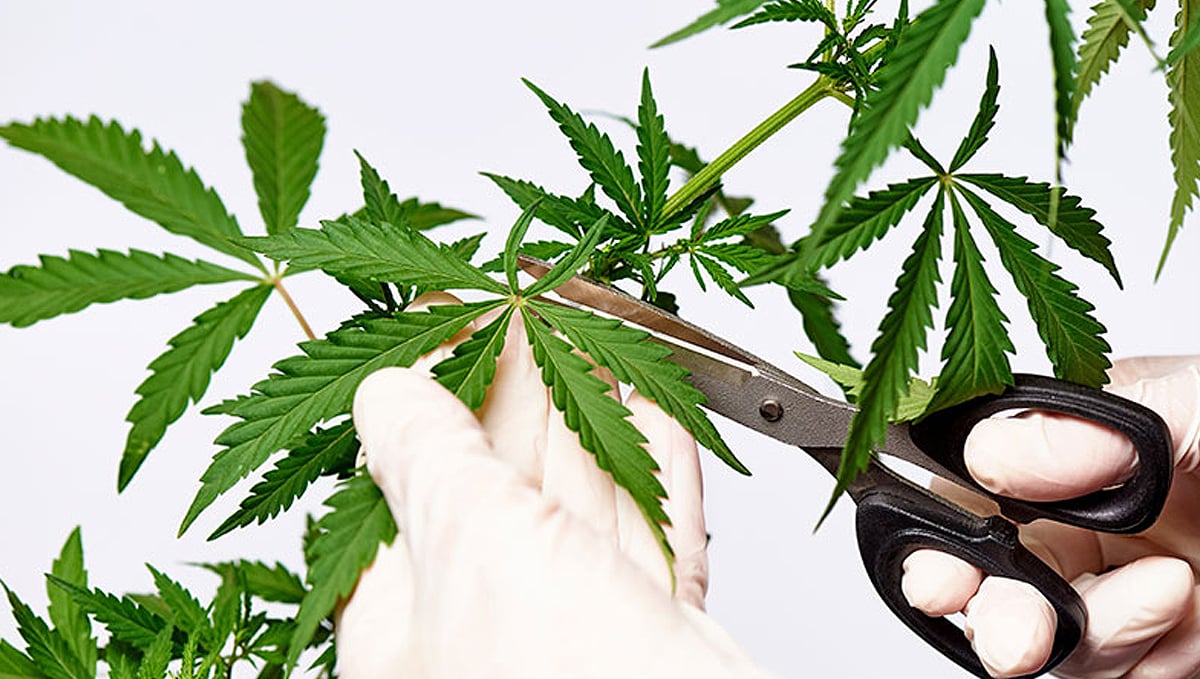
This virus can also be transmitted through the seed of a diseased plant but although there is ongoing research to determine how it happens and the transmission rate. As mentioned above, it’s almost impossible to identify an infected plant because there are asymptomatic plants that may look healthy but are actively spreading the virus to your whole crop so it’s essential you take safety precautions.
3. How Does The HpLVd Affect Cannabis Plants?
There’s still a lot to know about the hop latent viroid, its progression, and transmission but researchers now think that this virus generally passes from plant to plant via mechanical transmission, meaning that the contaminated plant has to be in direct or indirect contact with a healthy one. Researchers have also found that the HpLVd has already spread among hundreds or thousands of pants across the world but due to being identified recently, most growers do not know that their plants are contaminated or may not know the symptoms the plants are exhibiting are caused by this virus.
| Hop Latent Viroid Symptoms | ||
|---|---|---|
| Reduced vigor | Reduced potency | Overall loss of quality and yield |
| Stunted trichome production | Abnormal branching | Up to 50% less cannabinoid and terpene production |
Another important factor that made it difficult to identify the hop latent viroid is that the virus tends to stay dormant, meaning that plants can be infected but show no symptoms for a determined period of time. This means that the virus can silently spread and will only “wake up” when suffering stress, such as heat stress, food-related stress, or a bug outbreak, which is why this disease is so hard to identify without proper testing. Researchers have found that clones taken from a single mother plant are more vulnerable to the disease which can cause anywhere from 10-30% of infected clones to show grave symptoms.
This disease won’t actually kill your plants and sometimes it might not even be clear that your plant is indeed sick, but you will definitely see subtle symptoms, this happens because the virus will greatly reduce the quality and quantity of the harvest.
Common HpLVd Symptoms During The Vegetative Stage
During the vegetative stage, cannabis plants usually show the following symptoms:
- Shorter internodal spacing;
- Smaller leaves;
- And plants developing shorter than usual.
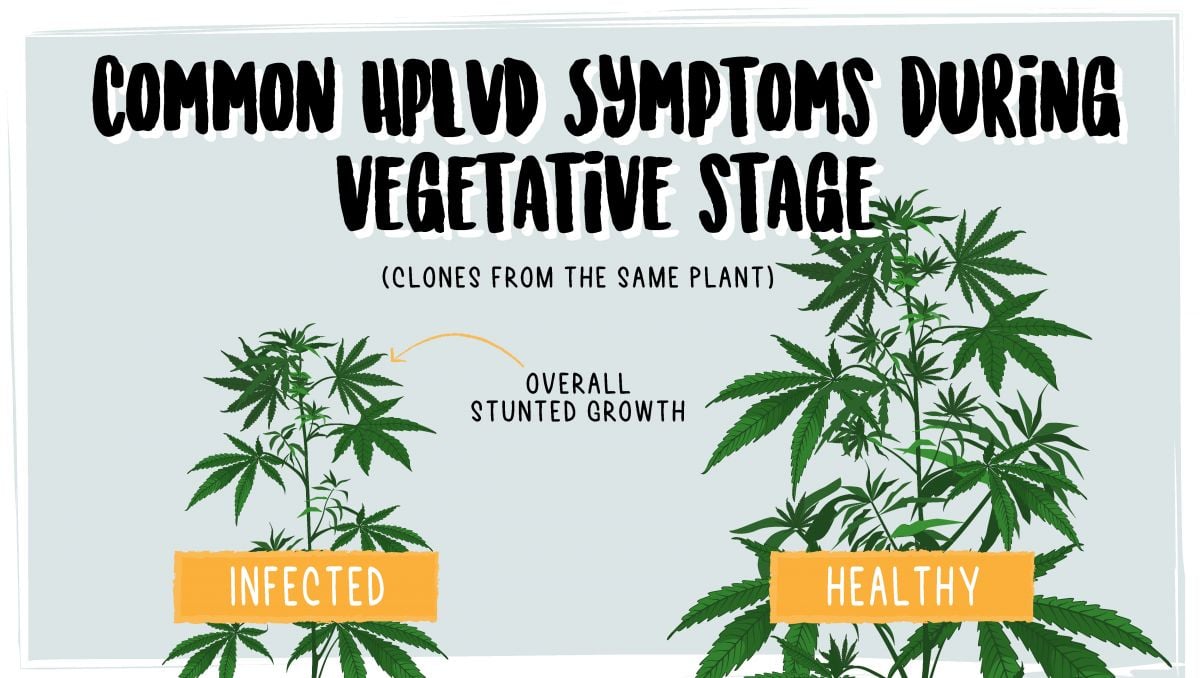
Common HpLVd Symptoms During The Flowering Stage
Whereas, during the flowering stage, infected plants will usually:
- Develop smaller and looser buds;
- Produce less trichomes;
- And sometimes reduce the cannabinoid content up to 50%.
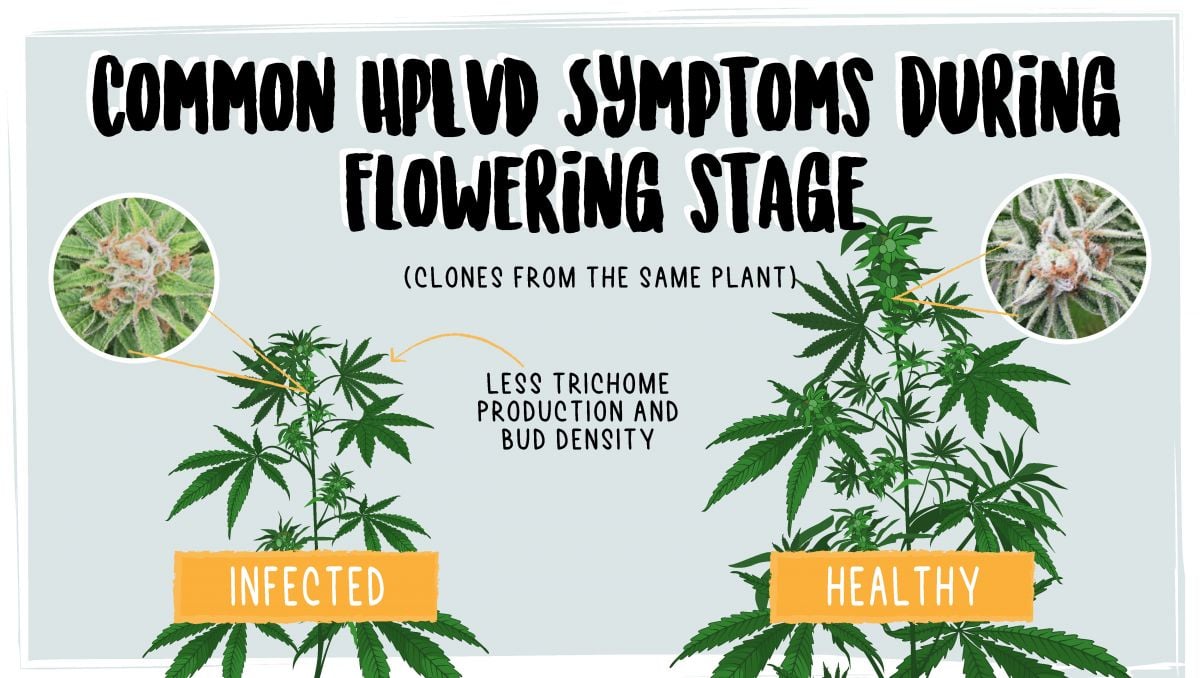
Now, as you can see, these symptoms can be easily confused with bad genetics or less-than-ideal growing conditions but be sure that if you’ve grown the same strain before and the result is way worse than before, your plants might be infected. So, as a guideline, if you see the following symptoms and have already checked every other aspect that could have gone wrong, it’s a possibility that your plants have been infected.
4. What To Do If Your Plants Have The “dudding disease”?
If you’re suspecting that your plants are infected with the HpLVd, the first step is to determine if they really are, so first of all you will have to do a test.
Screening test
Not all plants will show clear symptoms or look infected so the fastest way to determine its presence is a screening test, such as a qPCR test which may not be so easy to get depending on where you live and how much you want to spend, so it’s mostly recommended for commercial growers.
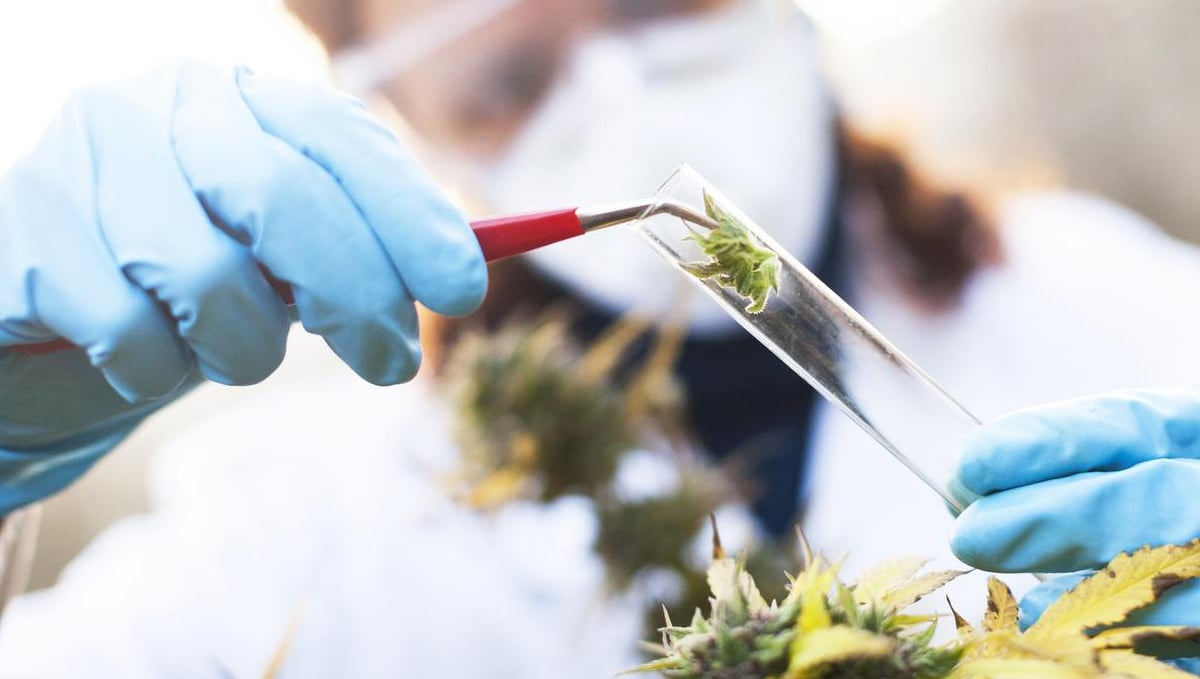
Have in mind that you can also screen mother plants and newly acquired clones with a qPCR test to make sure they’re virus-free, but this can get expensive so, as said above, always take safety precautions.
Isolation
If the results come out positive, all the infected plants should be removed from the grow room as soon as possible and disposed of, also, all the plants that were in direct contact with the infected plant should be isolated and tested if possible.
Tissue Culture
Now, if you have tested your entire crop and all of your plants are infected or if a special mother plant is infected, the easiest way to get rid of the HpLVd it is via tissue culture; This process uses a specific treatment that eliminates the virus, this way the new plant will grow 100% healthy and disease-free.
Safety Tips
The best way to prevent the virus is by sterilizing the equipment before working on a new plant, it's also highly recommended that you wash your hands and change into a new pair of gloves before working on a new plant. You should always practise good hygiene whenever stepping into your growing space to minimise the chances of vectoring disease. Don’t bring in any plant material from the outside world that isn’t screened, and don’t step into your grow tent wearing shoes that you’ve just worn while walking around the garden.

Pests can also vector some diseases, so consider placing insect screens in your grow tent wherever you think that pests could gain entry. So if you don't want to waste time and spend a lot of money on any of the things mentioned above make sure you take all of the preventive measures!
5. Alternative Treatment
As said before, this virus is relatively new to cannabis but there are already a lot of commercial growers with huge grow rooms that have been experimenting with alternative treatments in order to save a bit of money and prevent infections fast, so here’s a quick and easy recipe to help you save your infected plants.

Just remember that this may not work in 100% of the cases depending on the products you're using and how you're doing it, but when done properly there is a really high chance that it will clear up “dudding”, so make sure you give it a try before resorting to more extreme measures.
- Mix 8ml of any broad-spectrum bactericide/fungicide such as OxiDate 2.0 (or Zerotol) per liter of water;
- Dunk freshly cut clone (right after being cut) for 2-3min and then continues the process, letting cutting root as usual;
- After they root dunk the clone in a mix of 0.5ml of broad-spectrum bactericide/fungicide (such as OxiDate 2.0) per liter of water.
6. Extra Tips
You don’t always have to clean the plant as in some cases, sometimes you can get a positive from the bottom of the plant and one negative from the top of the plant, so here are a couple of tips to make your life easier:
- Always clone from the top of the plant as top growth is usually healthier;
- Have a dedicated pair of scissors and razor blade for each plant;
- Change your cloning solution between each plant and;
- Remember that bactericides and similar products slow down root development, so be patient!
7. In Conclusion
Despite not being super harmful at first sight, the Hop latent viroid (aka “dudding disease” or “dudding”)is something you should definitely look out for because it may end up infecting your whole crop, and even though it’s not as destructive as other pathogens, it will definitely be bad for your plants, especially if you’re a commercial grower so, as said above, the key is sanitation! Make sure you always clean your tools before working on a new plant and keep an eye out for odd growth, especially if that specific cultivar has been growing normally and just recently started to underperform. It may not seem like a huge problem if you’re not a breeder or commercial grower but you will definitely notice the difference in bud quality, quantity, and overall plant growth and health so make sure you take all the safety precautions possible.
If you have dealt with the Hop latent viroid before and have some tips to help fellow growers, feel free to leave a comment in the comment section below!
External References
- The molecular structure of hop latent viroid (HLV), a new viroid occurring worldwide in hops. - Puchta, Holger & Ramm, Karla & Sänger, Heinz. (1988).
- The control of Hop Latent Viroid in UK hops. - Adams, A.N. & Barbara, D.J. & Morton, A. & Darby, P. & Green, C.P.. (1995).
- The occurrence of Hop latent viroid causing disease in Cannabis sativa in California. - Warren, Jeremy & Mercado, Jennifer & Grace, Dan. (2019).








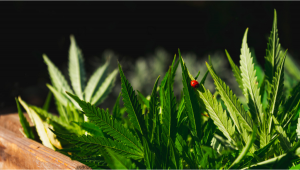




Comments